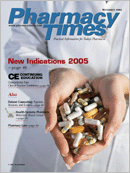Publication
Article
Pharmacy Times
Caution Is Required with Flammable Medications
Author(s):
A nurse practitioner in a physician'soffice was preparing to treat a 6-year-oldchild's infected toe. She sprayed hisfoot with ethyl chloride to numb thearea and then proceeded to lance thearea using electronic surgical cautery.As soon as she triggered the device, theentire surgical field ignited, includingthe pad underneath the child's foot.Miraculously, he did not suffer anyburns, even though his foot was in themiddle of the fire. Later, the nursepractitioner admitted that she hadbeen unaware that ethyl chloride was afire hazard and should never be used inthe presence of cautery equipment.
In another report, a fire occurred inan ambulatory surgery unit. Here, anassistant surgeon had prepared an operativeincision for bandaging by sprayingit with tincture of benzoin (which protectsthe skin and acts as an antiseptic).The primary surgeon had nearly completedsuturing the patient's incision,but he noticed a small bleeding areaalong the incision line and decided tocauterize it. The flammable benzoinignited briefly, but fortunately thepatient was not harmed.
Yet another fire occurred whenLacri-Lube S.O.P. (56.8% white petrolatum,42.5% mineral oil) was ignitedduring a laser surgery. A child who washaving warts removed near his eyessuffered burns to the eyelids and periorbitalarea. According to ECRI (a nonprofitorganization that operates amedical device reporting program),approximately 100 surgical fires occureach year, resulting in up to 20 seriousinjuries and 1 to 2 patient deaths. Anumber of these fires have involvedflammable medications in the form ofprepping agents (alcohol and alcohol-containingiodophors), eye lubricants,ointments, and wound dressings (tinctureof benzoin and collodion).
These are just some examples ofhow flammable some products can be.According to the material safety datasheet for ethyl chloride, it is heavierthan air, and the vapors may hug theground, making distant ignition andflashback possible. Even static "electricity"may ignite it. Given this danger,you might expect that a warningon the product container would beprominently displayed. The label onone brand of ethyl chloride(Gebauer's), however, has the word"flammable" enclosed inside a borderalong with an icon that looks more likea flower than a flame. Unfortunately,warnings about a medication's flammabilitymay not appear directly onthe package and, furthermore, may noteven be considered by practitionersuntil a problem occurs.
Pharmacists who supply medicationsto physician offices or ambulatorycare centers must be alert to the distributionof potentially flammablemedications. If these substances areordered, pharmacists should ensurethat practitioners using them knowabout the dangers of flammable products,as well as the potential for burnswhen these products are used in conjunctionwith a heat source.
Also, prescribers may give patients aprescription for such medications to bepicked up at the pharmacy for a procedurebeing performed in the physician'soffice. Pharmacists should consider contactingthe office to ensure that thephysician is aware of the product'spotential for flammability. In addition,pharmacists should inform patients thatthe opportunity for significant harmexists if the product is used or stored inthe presence of heat or open flames.
This information also should be providedto patients receiving other potentiallyflammable medications (varioustopical solutions, medicated sprays, andaerosols). For example, topical solutionssuch as ciclopirox (Penlac) and minoxidil(Rogaine) contain a high concentrationof alcohol, and the product informationfor each warns that it isflammable and should not be used orstored near heat or open flames.
Dr. Kelly is the editor of ISMP MedicationSafety Alert! Community/AmbulatoryCare Edition.
Report MedicationErrors
The reports described here were receivedthrough the USP Medication Errors ReportingProgram, which is presented in cooperationwith the Institute for Safe Medication Practices(ISMP). ISMP is a nonprofit organizationwhose mission is to understand the causes ofmedication errors and to provide time-criticalerror-reduction strategies to the health carecommunity, policy makers, and the public.Throughout this series, the underlying systemcauses of medication errors will be presentedto help readers identify system changes thatcan strengthen the safety of their operation.
If you have encountered medicationerrors and would like to report them, youmay call ISMP at 800-324-5723 (800-FAILSAFE) or USP at 800-233-7767 (800-23-ERROR). ISMP's Web address is www.ismp.org.
Subscribe toNewsletter
Pharmacy Times and the Institute for Safe MedicationPractices (ISMP) would like to make communitypharmacy practitioners aware of a publicationthat is available.
The ISMP Medication Safety Alert! Community/Ambulatory Care Edition is a monthly compilationof medication-related incidents, error-preventionrecommendations, news, and editorial contentdesigned to inform and alert community pharmacypractitioners to potentially hazardous situationsthat may affect patient safety. Individual subscriptionprices are $45 per year for 12 monthlyissues. Discounts are available for organizationswith multiple pharmacy sites. This newsletter isdelivered electronically. For more information, contactISMP at 215-947-7797, or send an e-mailmessage to community@ismp.org.







